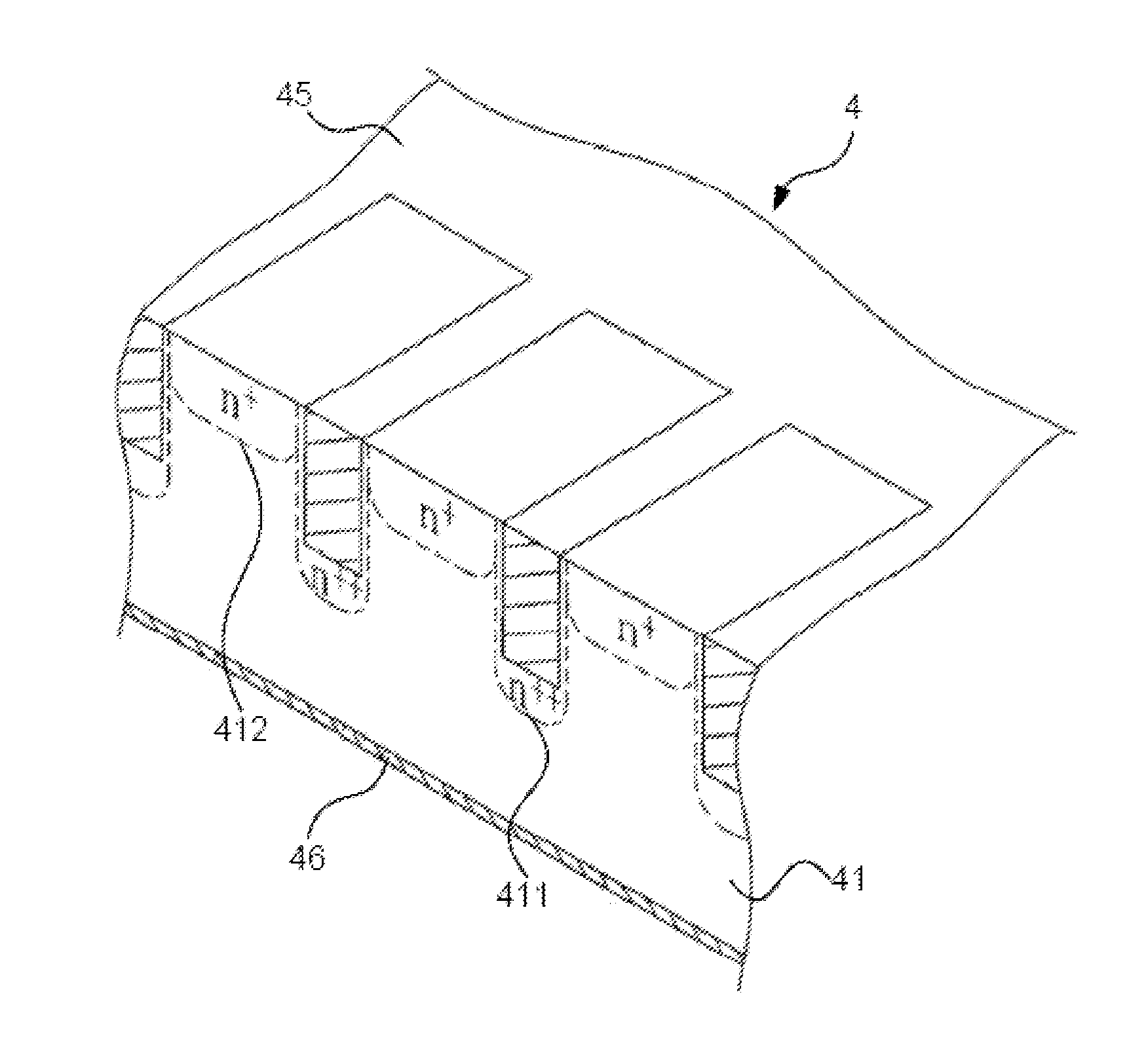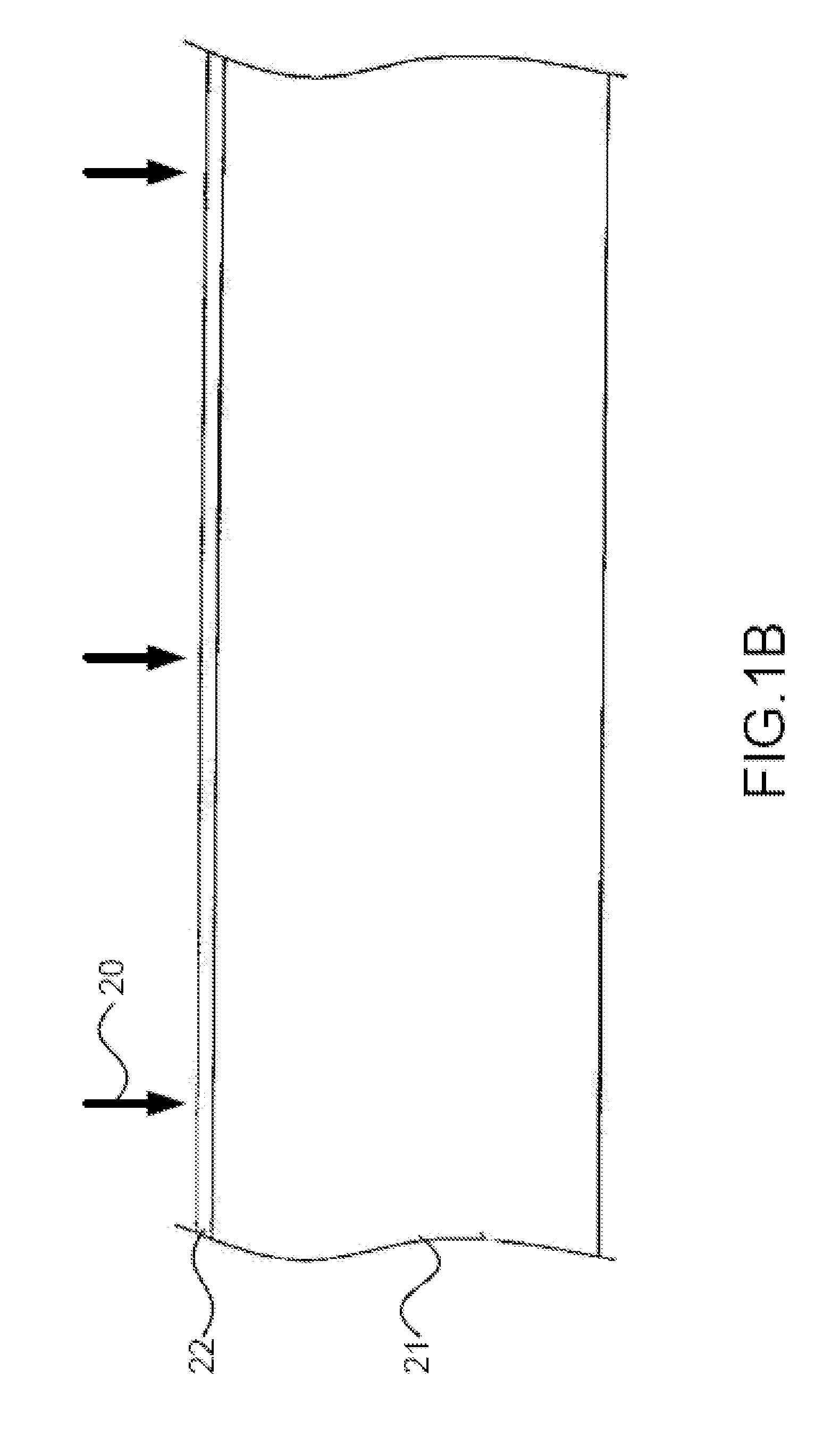Method of Manufacturing Selective Emitter Solar Cell
- Summary
- Abstract
- Description
- Claims
- Application Information
AI Technical Summary
Benefits of technology
Problems solved by technology
Method used
Image
Examples
Embodiment Construction
[0026]The following descriptions of the preferred embodiments are provided for understanding the features and the structures of the present disclosure.
[0027]Please refer to FIG. 1A to FIG. 1F and FIG. 2 to FIG. 5, which are views showing a flow and states of use of a first preferred embodiment according to the present disclosure; a view showing a relationship among processing power, processing time, and thickness of a grown silicon nitride layer; a view showing refractive index of a grown silicon nitride layer; a view showing a relationship among processing power, processing time, and sheet resistance of a doped region; and a view showing a SIMS analysis of distribution of phosphorus atoms. As shown in these figures, the present disclosure is a method of manufacturing a selective emitter solar cell. In FIG. 1A, a first preferred embodiment according to the present disclosure comprises the following steps:
[0028](a) Forming barrier pattern 11: In FIG. 1B and FIG. 1C, a barrier pattern...
PUM
 Login to View More
Login to View More Abstract
Description
Claims
Application Information
 Login to View More
Login to View More - R&D
- Intellectual Property
- Life Sciences
- Materials
- Tech Scout
- Unparalleled Data Quality
- Higher Quality Content
- 60% Fewer Hallucinations
Browse by: Latest US Patents, China's latest patents, Technical Efficacy Thesaurus, Application Domain, Technology Topic, Popular Technical Reports.
© 2025 PatSnap. All rights reserved.Legal|Privacy policy|Modern Slavery Act Transparency Statement|Sitemap|About US| Contact US: help@patsnap.com



